With the close of the 2013 IAA Frankfurt Motor Show yesterday, 22nd September, we take a look at the highlights from an electric/hybrid perspective.
From the outset, the 2013 Frankfurt Motor Show looked destined to be focused on electric cars, with the likes of Renault already having a range of four electric cars and with BMW pushing their premium i3 as much as possible with it’s launch taking place at the end of July and sales to commence in November. However, what nobody really expected was VAG (Volkwagen Audi Group) to state their intention to lead the world market in electric cars as they launched their electric versions of the highly acclaimed city car the up! and the well rounded Golf – the e-up! and e-Golf respectively. They also added a small van version of the up!, also powered by electric motors, aptly named the e-load up!.
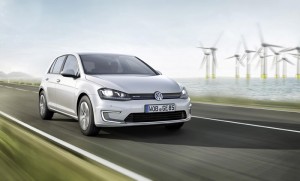
Not only were electric cars taking centre stage at the largest and most important motor show in the automotive annual calendar, but hybrid vehicles followed a close second.
BMW’s i8 sports car and Porsche’s 918 Spyder hybrid both set the stage alight with their official unveilings. The BMW features 1.5 litre three cylinder petrol engine – but twin turbo’s give it an output of over 200bhp. Combined with an electric motor for extra torque and economy at low speeds, the hybrid sports car – despite it’s original Prius sized 1.5 litre petrol unit – push the lightweight carbon fibre car to 62mph /100 kmh in around 5 seconds.
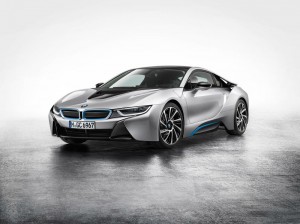
Porsche’s offering on the other hand is altogether more track focussed, with over 900bhp on offer from it’s petrol/electric combination. Porsche felt that the car’s rightful place was at the Nurburgring Nordschleife circuit the day before unveiling the car and set a blindingly fast lap of 6 minutes 57 seconds. This put paid to any fears that hybrids are heavy, ungainly and uncool!
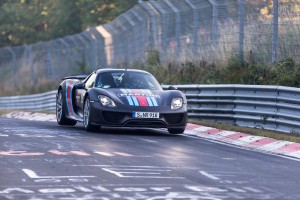
Several technological advancements in were also announced, with the likes of Bosch displaying their hybrid system, aimed to make them more affordable and Samsung announcing a huge amount of money, research and development into battery technology destined for electric cars.
Needless to say, there were several one off concepts, but the intriguing thing here is that most of them happened to be either purely electric or hybrid drive.
Nissan’s Friend-Me (hybrid), Vauxhall/Opel’s Monza Concept (hybrid), Kia’s Urban Lifestyle Concept (hybrid), smart’s fourjoy (EV) and Citroen’s Cactus (hybrid) all sparked (excuse the pun) huge interest with the smart perhaps being the most likely to see further development. Renault-Nissan and Daimler have formed a partnership and are already working together on the next smart four seater and Renault Twingo replacment; which, given Renault’s involvement and push for electric cars as well as smart’s fortwo electric car, is quite likely to at least feature an all electric version if it isn’t the sole means of power altogether.
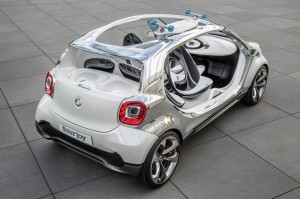
Further hybrid innovations were to be seen at BMW, where the introduction of the large SUV X5 was on display with a plug-in hybrid version. Offering significant fuel consumption improvements, it is sure to be popular with purchasers who prefer large SUV vehicles for their supposed safety credentials to occupants, as well as the more economically minded.
Lexus joined in the fun with a smaller crossover, named the Lexus LF-NX Crossover Concept, with hybrid power from a newly developed Toyota/Lexus drivetrain designed to offer “SUV performance”.
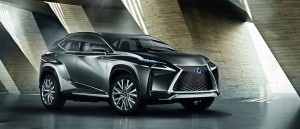
In the premium sector, hybrids have made a huge difference and rather than being the domain of cheap run-arounds, aimed at saving owners the odd pound or two in fuel, they’ve largely been adopted by the upper tier of motoring. Despite the aforementioned BMW i8 and Porsche 918 Spyder, Mercedes-Benz’s luxury S-Class is perhaps the most stately of the lot and they now offer their S 500 in plug-in hybrid form.
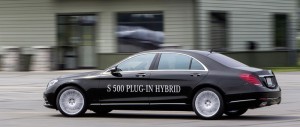
Tesla Motors have been busying themselves in a major way with their advance throughout Europe and Frankfurt was no exception. While most manufacturers were content with using charging facilities developed by others, Tesla went the whole nine yards and installed a Tesla Supercharger station at Frankfurt. Allowing a Tesla Model S to be recharged from empty to around 80% in 20 minutes, the Supercharger station and Model S form the pairing most likely to get the heckles up of the established auto-manufacturers.
Indeed, shortly after Tesla’s limelight at the show, rumours aplenty spread of major manufacturers creating rival vehicles to the Tesla but with significantly more investment behind them. How true they are or not, remains to be seen – but it’s certain that the established companies are not taking the Tesla ‘threat’ lightly.
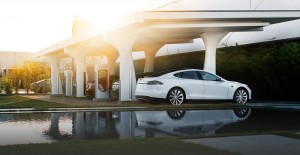
Last but not least, the grand unveiling of the exciting new Formula E racing car for next year’s inaugural season took place to an excited and gathered press. Jointly developed by several leading Formula 1 teams, the SRT_01E, as it is officially titled, is ready to set the streets alight in a city near you – starting September 2014.
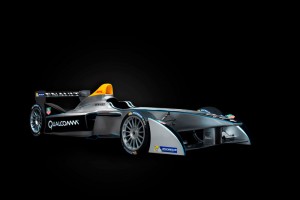
To see all the cars mentioned above and read about each one in detail, take a look at our Frankfurt page:
AutoVolt-Magazine – 2013 IAA Frankfurt Motor Show
and to see the Frankfurt Motor Show in pictures, head here:
AutoVolt Magazine – 2013 IAA Frankfurt Motor Show in Pictures
